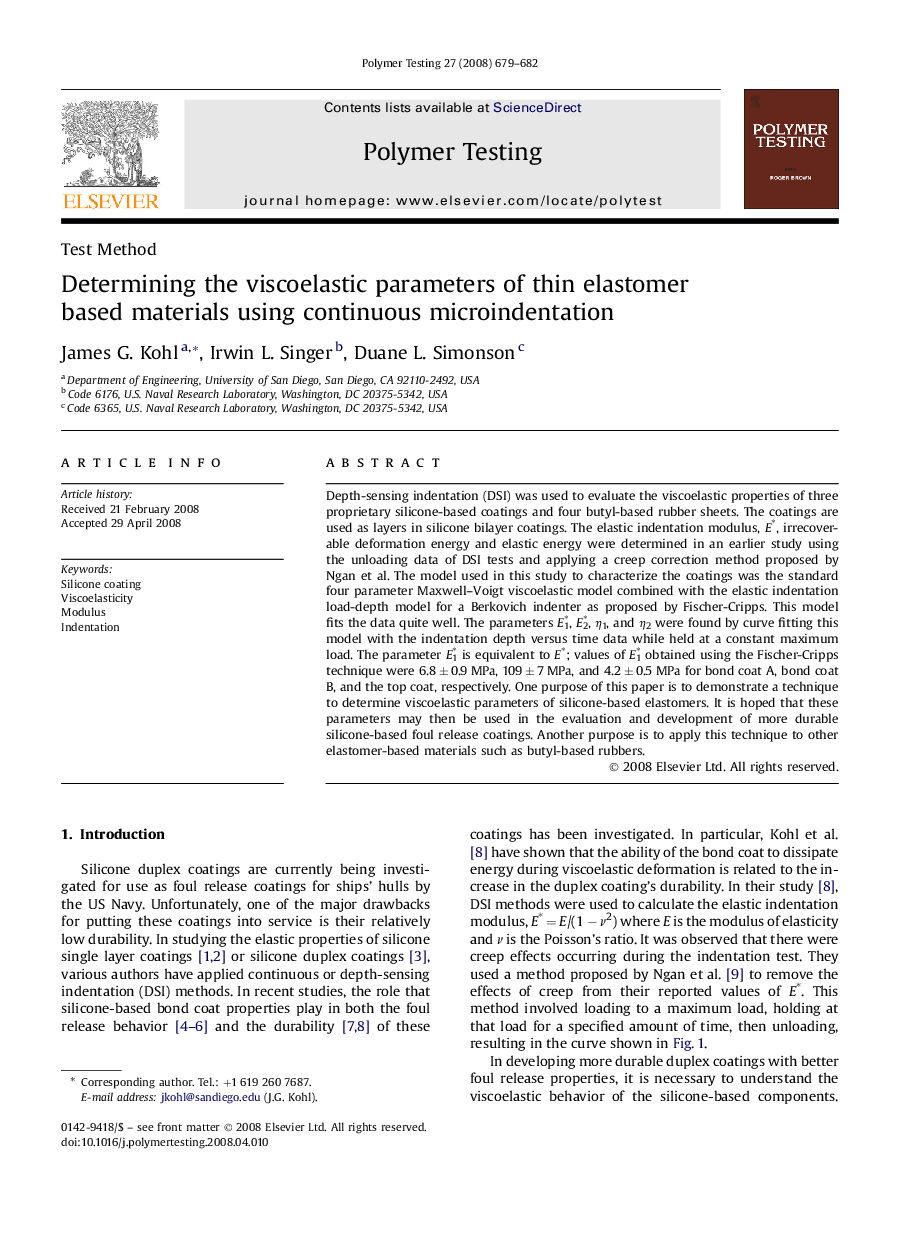| Article ID | Journal | Published Year | Pages | File Type |
|---|---|---|---|---|
| 5207418 | Polymer Testing | 2008 | 4 Pages |
Abstract
Depth-sensing indentation (DSI) was used to evaluate the viscoelastic properties of three proprietary silicone-based coatings and four butyl-based rubber sheets. The coatings are used as layers in silicone bilayer coatings. The elastic indentation modulus, Eâ, irrecoverable deformation energy and elastic energy were determined in an earlier study using the unloading data of DSI tests and applying a creep correction method proposed by Ngan et al. The model used in this study to characterize the coatings was the standard four parameter Maxwell-Voigt viscoelastic model combined with the elastic indentation load-depth model for a Berkovich indenter as proposed by Fischer-Cripps. This model fits the data quite well. The parameters E1â, E2â, η1, and η2 were found by curve fitting this model with the indentation depth versus time data while held at a constant maximum load. The parameter E1â is equivalent to Eâ; values of E1â obtained using the Fischer-Cripps technique were 6.8 ± 0.9 MPa, 109 ± 7 MPa, and 4.2 ± 0.5 MPa for bond coat A, bond coat B, and the top coat, respectively. One purpose of this paper is to demonstrate a technique to determine viscoelastic parameters of silicone-based elastomers. It is hoped that these parameters may then be used in the evaluation and development of more durable silicone-based foul release coatings. Another purpose is to apply this technique to other elastomer-based materials such as butyl-based rubbers.
Related Topics
Physical Sciences and Engineering
Chemistry
Organic Chemistry
Authors
James G. Kohl, Irwin L. Singer, Duane L. Simonson,
